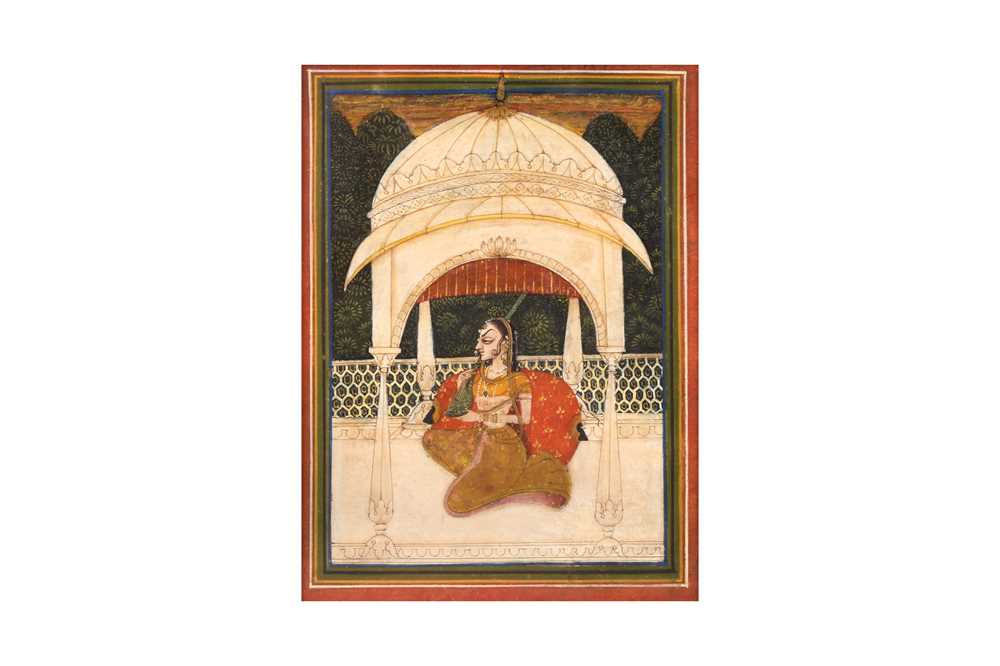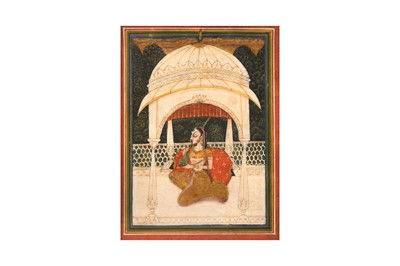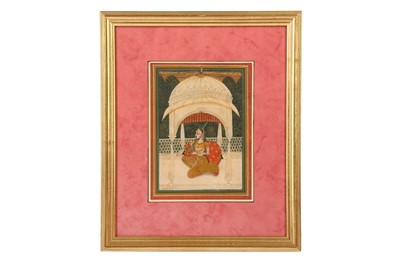28th Oct, 2022 14:00
Islamic & Indian Art
A COURTLY LADY PLAYING A TAMBURA (TANPURA)
Kishangarh, Rajasthan, North-Western India, late 18th - 19th century
A COURTLY LADY PLAYING A TAMBURA (TANPURA)
PROPERTY FROM A PRIVATE FRENCH COLLECTOR
Kishangarh, Rajasthan, North-Western India, late 18th - 19th century
Opaque pigments heightened with gold on paper, the miniature-like vertical composition depicting a courtly lady, possibly a professional musician or a nayika (archetypal female heroine), seated under a marble pavilion on a terrace of a palatial compound, practicing her notes on a tambura (also known as tanpura), a long-necked plucked string instrument typically featured in Hindustani classical music, her facial features with sharp nose profile, exaggerated arched eyebrows and elongated 'fish-eye' traditionally associated with the painting school of Kishangarh, set within concentric polychrome rules, and green and red borders, mounted, glazed and framed, the painting 15.5cm x 11.5cm, 27cm x 22.5cm including the frame.
The subject of this painting, featuring a female sitter playing a tambura, was a favourite in 18th-century Indian paintings. Another 18th-century Kishangarh painting, presenting the same subject and now part of The Metropolitan Museum of Art collection (acc. no. 1996.100.1), shows a heavily bejewelled and finely clad nayika strumming a tanpura. It has been hypothesised that she could impersonate Radha, the divine consort of Krishna, who was important to Kishangarh patrons, devoted Vaishnavas. For two more paintings depicting this popular subject, one from Kota and the latter erroneously attributed to a Mughal School, but most likely a Basohli or provincial Phari creation, please see acc. no. 58.1.9 at The Metropolitan Museum of Art and F1907.195 at the Freer Gallery of Art.
(Quantity:1)
Dimensions: the painting 15.5cm x 11.5cm, 27cm x 22.5cm including the frame
Do you have an item similar to the item above? If so please click the link below to request a free online valuation through our website.



